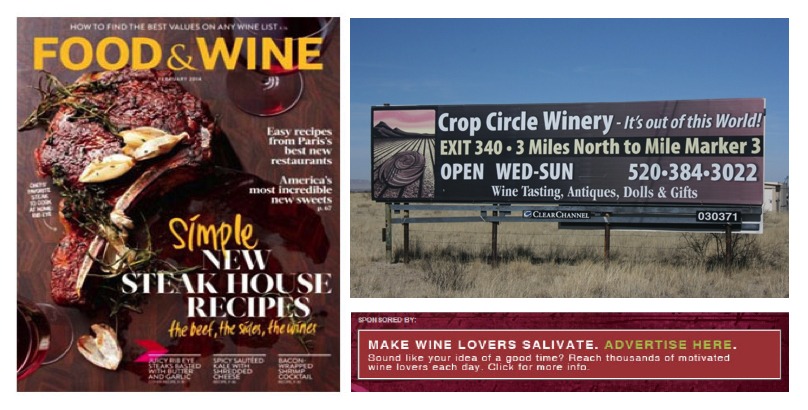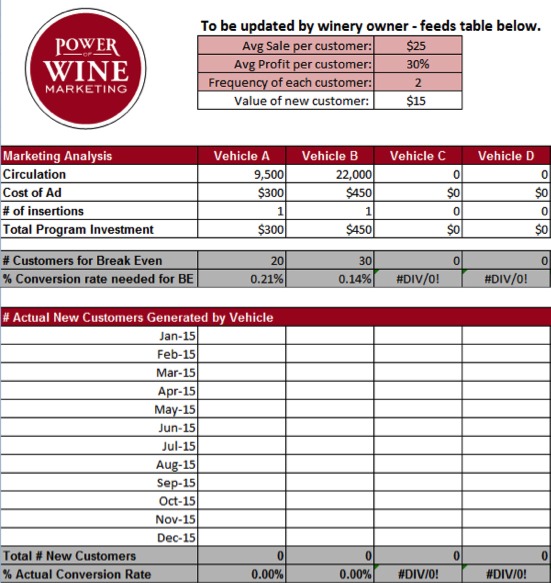
After our most recent Will Design for Wine webinar, one of our participants said their winery often struggles with trying to figure out which media channels to use for advertising. This is a common challenge for many small businesses!
There are a lot of advertising options out there including newspapers, magazine, direct mail, billboards, radio, and cable TV. Then there are online channels such as Google AdWords, Facebook, Twitter, Pinterest, and even Instagram ads. Mobile marketing is gaining momentum, too, as more and more people interact with the world from their phones and tablets.
So you have a marketing budget. (You do, right?! If not, decide how much money to set aside each year for promoting your winery; one industry calculation we’ve seen is 15% to 35% of annual profit.) Okay, then. How do you decide where to invest your limited resources to achieve your goals and maximize your return on investment?
Don’t invest any money to drive traffic to your winery or website until you have a cohesive brand that communicates how you are different from the competition. Your website, wine labels, in-store signage, social media sites, email newsletters, packaging, etc. should all have the same logo, address, phone number, tagline or message, font, and images. Include a call to action. Consistency in your brand helps people remember you… we discuss this in greater detail in the
top 5 branding tips for wineries.
Think about your ideal customers and their lives. What is the percentage of men vs. women? What is their age range? Are they single or married, working or retired, rural or urban, Millennials or Baby Boomers? Do they travel? Are they parents with young kids? (You can have different market segments, but focus on your primary audience, which should be either the largest or most profitable group.) Once you know who you’re trying to reach, make sure to advertise in places where your target audience spends time. For example, if your ideal consumer is retired baby boomers, you’re not going to reach them on Instagram regardless of how fast it’s growing. It just wouldn’t make sense for your winery.
Compare advertising channel suitability. Ask advertising sales representatives for their Media Kits; many can even be found online. This document will tell you who their consumers are and how many people read the magazine, watch the show, listen to the station, drive past the billboard, receive mail in that zip code, or visit the website. It also will detail their geographical coverage, available ad sizes, design specifications, and standard ad costs. Eliminate any advertising channels that do not reach your target audience.
Review the remaining advertising opportunities side-by-side and consider your ROI before investing. It’s a marketer’s dream to have enough money for everything, but chances are you’ll have to prioritize based on budgetary constraints. You can look which channel has the best conversion rate, the lowest break-even point or cost per action, and so on. Just pick one method to predict effectiveness and stick with it. Here’s a sample Ad Vehicle Analysis & Tracking tool available to Power of Wine Marketing members:

For example, in Vehicle A there is a lower circulation meaning fewer people will see your ad. Yet because the ad cost is lower you need fewer new customers from this investment to break-even. Even though the conversion rate is slightly lower for Vehicle B, it’s not enough to offset having to bring in an additional 10 new customers.
Once you look at the numbers, you’ll be able to make much more informed choices about where to invest your marketing budget.


